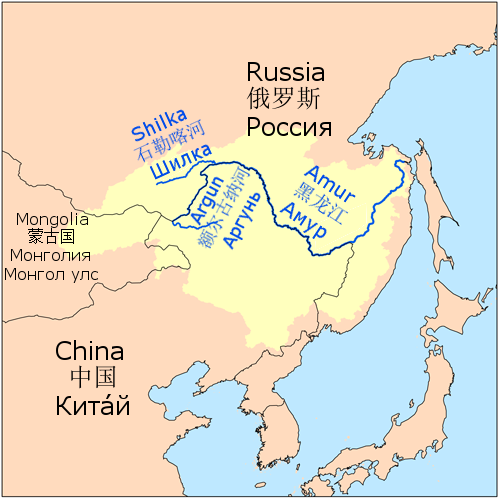
Ergune or Argun is the river which is a part of the Russia–China border. Its upper reaches are known as Hailar River (Chinese: 海拉尔河; pinyin: Hăilā’ěr Hé) in China. Its length is 1,007 mi (1,620 km). The Ergune marks the border (established by the Treaty of Nerchinsk in 1689) between Russia and China for about 944 km, until it meets the Amur River. The name derives from Buryat Urgengol ‘wide river’ (urgen ‘wide’ + gol ‘river’).
The river flows from the Western slope of the Greater Khingan Range in Inner Mongolia. Its confluence with Shilka River at Ust-Strelka forms the Amur River.
Kherlen–Ergune–Amur
In years with high precipitation, the normally exitless Hulun Lake may overflow at its northern shore, and the water will meet the Ergune after about 30 km. The Kherlen–Ergune–Amur system has a total length of 5,052 km.
Ergune in The Secret History of the Mongols
In The Secret History of the Mongols speaks legend related to the Ergüne hun Mongol ancestry. In this legend, the Mongols prevailed over other tribes and carried such slaughter among them, that in living remained no more than two men and two women. These two families, in fear of the enemy, fled to the inhospitable terrain, which included only mountains and forests and to which there was no road. Among those mountains was the abundant grass and healthy climate of the steppe. Then, legend tells that in Ergune-Khun, Mongols multiplied and become masters of iron smelting and blacksmithing. According to legend, it is the art of melting iron that has helped them escape from the mountain gorges on scope of the current Mongolian steppes, to the Kherlen River and Onon River.
Note : The above story is based on materials provided by Wikipedia










